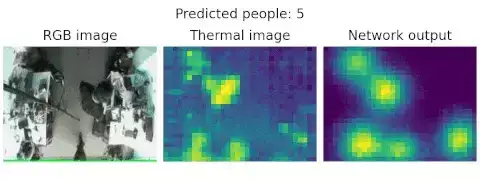Low-Cost Thermal Camera-Based Counting Occupancy Meter Facilitating Energy Saving in Smart Buildings

Abstract:
Using passive infrared sensors is a well-established technique of presence monitoring. While it can significantly reduce energy consumption, more savings can be made when utilising more modern sensor solutions coupled with machine learning algorithms. This paper proposes an improved method of presence monitoring, which can accurately derive the number of people in the area supervised with a low-cost and low-energy thermal imaging sensor. The method utilises U-Net-like convolutional neural network architecture and has a low parameter count, and therefore can be used in embedded scenarios. Instead of providing simple, binary information, it learns to estimate the occupancy density function with the person count and approximate location, allowing the system to become considerably more flexible. The tests show that the method compares favourably to the state of the art solutions, achieving significantly better results.
You can found more about this project here.








Comments